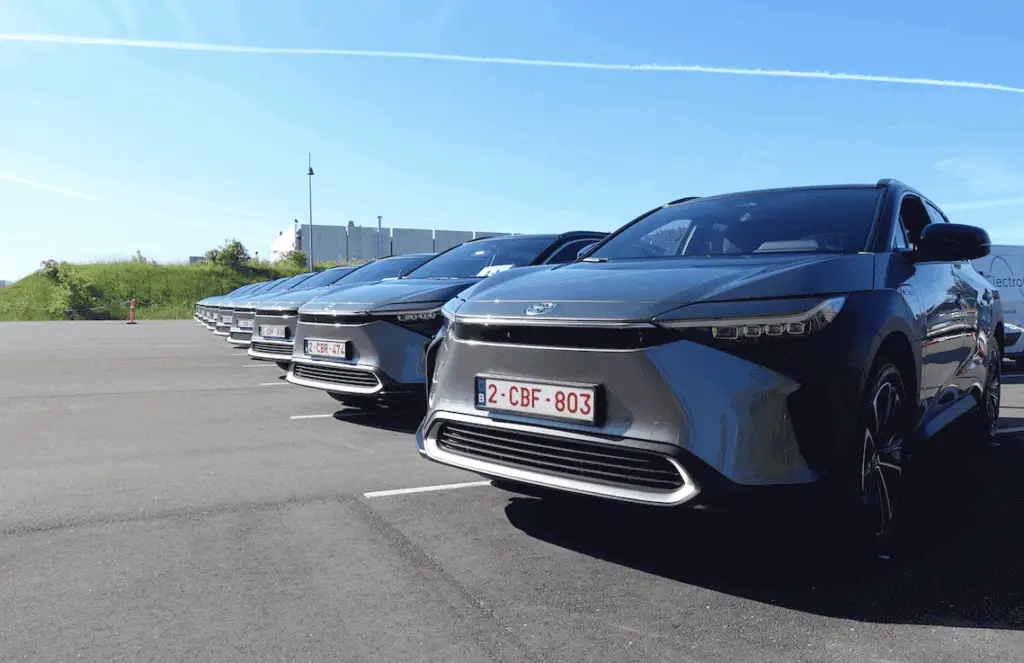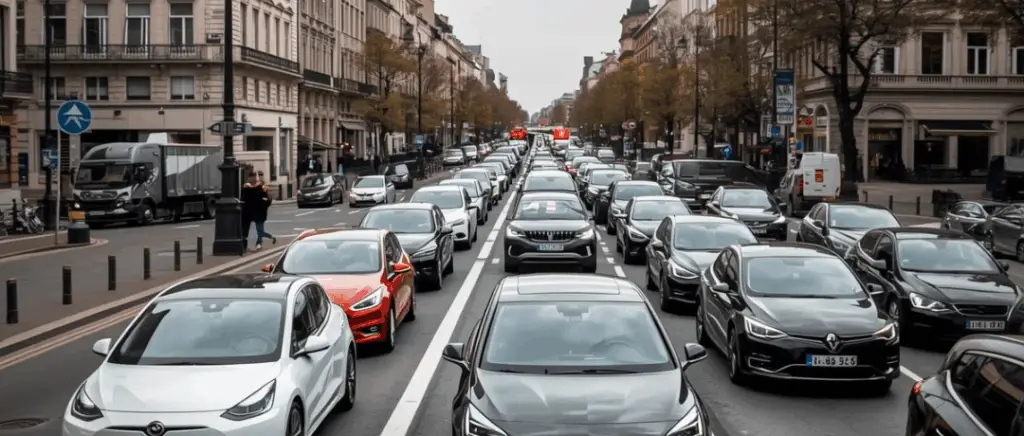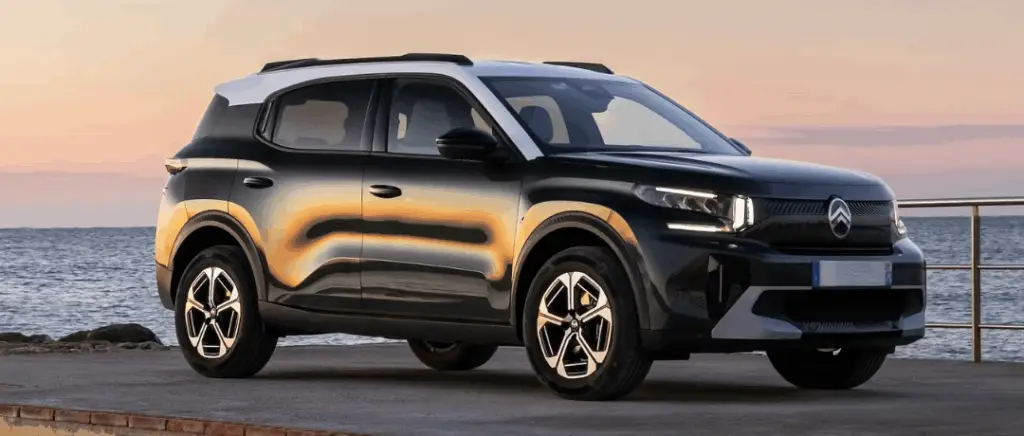Monday to Friday 9am - 12.30pm - 2pm - 7pm
Car policy: definition
This is the internal automobile policy of the company.The carpolicyincludes rights and obligations of employees benefiting from the vehicles.In short, an internal charter governs the use of vehicles.(evening and weekend use, fuel card, maintenance, etc.)
It also covers and defines the type of vehicles to which employees and managers may have access.
The key stages in drafting an effective car policy
Many companies already have a carpolicy.However, in some cases these were written a long time ago and have not been updated for many years.
To make sure you succeedhis car policySometimes it's better to start from scratch.
We have prepared a complete guide to help you better define your objectives and successfully draft your carpolicy.
Involving employees
To succeedhis car policyYou have to involve your staff.A carpolicymust be supported by the employees of an organisation, whatever its size.The employees to be involved will vary according to the size of the company:For large companies, the Purchasing or Human Resources Director should be involved.In the case of very small and medium-sized businesses, the managers should undoubtedly be involved.In all cases, the people who will be driving the vehicles will of course need to be involved.
Defining your objectives
Once you have considered the different needs of your employees, you need to list the objectives of your car policy. You need to distinguish between :
- Regulatory objectives they will depend on the external environment (such as the law of LOMthe stimulus plan for greener car fleets and the 2022 Finance Bill).
- Internal objectives This will depend on your company's budget, but also on the image your company wishes to convey to its customers, suppliers and the public.
Setting deadlines
Writing a car policy can take time and energy. You need to be able to stick to a deadline when you start writing it, so that you can be sure of delivering a polished car policy at the end of the exercise.
READ ALSO - Everything you need to know about the vehicle fleet
Questions to ask yourself if you want to have a successful car policy in 2023
Before you start drafting your car policy, it's important to know what points are important to take into account when thinking about it. We've listed a number of topics that you should take into account in your thinking. For each topic, we've listed some questions you might want to ask yourself to help you better understand your objectives.
Eligibility
In most companies, the right to a company car falls into two broad categories:
- Users known as essential they need a vehicle for their work. employment (delivery drivers, sales staff, etc.)
- So-called status The car is included in their benefits package and they enjoy it as part of their job.
Questions to ask yourself :
- Who needs a vehicle for work?
- Is the current range of vehicles competitive enough with our competitors?
- Is our benefits package competitive?
- Are there any regulations that require us to issue a company car once a certain number of kilometres have been driven per year?
Allocation of vehicles
What's more, it's important to set strict rules when allocating vehicles. When can a company provide its employees with vehicles?
Questions to ask yourself :
- Is a vehicle essential to their job?
- How many years of driving experience do we need to offer a vehicle to an employee? Do we agree to provide vehicles for recent drivers?
- Do they suffer from a disability that could prevent them from driving with complete peace of mind? Should the risks be assessed beforehand?
- Should they sign a charter of good conduct with clear guidelines?
Choice of vehicles
For most car fleets, the choice of vehicles will be based on several criteria: price, taxationsafety and the environment. But it is also important to consider the image projected by the vehicles. Companies that deploy a fleet of electric company cars can benefit from a return on investment in terms of their reputation. Sustainable commitment has a positive impact on the image that a company projects to its customers and suppliers, as well as to its employees.
For example, the Paris City Hall has chosen to support the French automotive sector and show its commitment to the environment by ordering hundreds of Renault Zoé.
By 2021, 21 French companies, including Schneider Electric and Capgemini, have joined the fleet energy transition programme.
Questions to ask yourself :
- Are certain types of vehicle excluded from the choice list (for example, luxury vehicles or diesels) and should they be?
- Are certain makes of car excluded?
- Should our policy include compulsory options?
- Do we choose additional services to include in our contracts (accident insurance, telematics, etc.)?
- Can drivers use the vehicle for personal use?
- Can drivers ask to give up their company car and use their own vehicle? What would be the consequences in terms of remuneration for the employee and the company?
The company's responsibilities
As an employer, almost all your legal responsibilities with regard to company vehicles are linked to the safety, maintenance and insurance. You have a duty to ensure that drivers are not only physically fit but also competent to drive, that they are not asked to spend an unreasonable amount of time at the wheel and that the vehicles they are provided with are in good condition and properly maintained. From a legal point of view, it is important that you have a traceability of your audits so that, in the event of legal action, you can prove that you have fulfilled your legal obligations.
Questions to ask yourself :
- Do you have an internal resource that brings together the fleet's safety rules?
- Are drivers properly checked to ensure that they have the right licence for the type of vehicle they are being asked to drive, particularly for commercial vehicles? Are licences checked regularly?
- Do they have access to training to improve their driving? What happens if a driver loses points?
- What happens when a beneficiary's licence is withdrawn?
- How can I be sure that maintenance is carried out at regular intervals?
- Are drivers also aware of their responsibilities when it comes to regular vehicle safety checks (e.g. tyre pressure)? How can this be checked?
Good to know: we need to pay close attention to the issue of mobile phone use at the wheel. This is a real issue for fleet managers, and one that every company needs to address.
The beneficiary's responsibilities
When you assign a company vehicle to a driver, you are entrusting him with responsibility for an object of considerable value, which can also sometimes lead to accidents. It's important that the driver understands that he or she has responsibilities, particularly in terms of good driving and, in some cases, maintenance.
Questions to ask yourself :
- Are drivers aware of their obligations with regard to vehicle servicing and maintenance in accordance with the manufacturer's recommendations?
- Are they capable of carrying out regular safety checks (tyres, brakes, lights, etc.)? Is there a way of checking that these tasks have been carried out?
- Does the driver have an adequate breakdown service? Is advice provided on what to do in the event of a breakdown to minimise the risk of an accident?
- Are drivers aware of the terms and conditions of the insurance contract?
Accident management
It's also important to put in place clear guidelines on the driver's responsibilities in the event of an accident. For this part, it would be wise to seek advice from your insurer.
Questions to ask yourself :
- Are your drivers given advice on what to do in the event of an accident? How quickly should they notify you as their employer?
- What happens in an at-fault accident?
- Do we have a post-accident process in place?
Rules of good conduct
Another key area of fleet management is employee driving behaviour. Employees need to know where you stand on your attitude to driving within the law.
Questions to ask yourself
- Do you have a charter of good conduct reminding drivers that they must respect speed limits and the highway code?
- If a driver commits an offence, does he pay the fine? If so, how can you be sure that the fine has been paid?
- Does an employee keep his/her car if he/she has committed several offences?
- Are there any policies regarding the use of company vehicles for purposes such as towing?
- What are the consequences if a driver is charged with drink-driving or driving under the influence of drugs?
Vehicle maintenance
By allocating a company car, you are entrusting a driver with an object of great value. However, the resale value of this vehicle will be seriously affected if it is not properly maintained. Similarly, you could end up paying exorbitant repair costs at the end of a long-term lease if the vehicle is not in good condition at the end of the contract. So it's important to make drivers aware of their responsibilities when it comes to vehicle maintenance.
Another option to consider is to accelerate the transition to electric 100% cars. This choice enables fleet managers to make substantial savings thanks to reduced maintenance. On average, it is possible to save up to 50% on maintenance and repair operations, throughout the cycle.
Questions to ask yourself :
- Are drivers made aware of the need to comply with the manufacturer's servicing and maintenance requirements?
- What information should drivers be given to keep the vehicle in the best possible condition? What do we expect in terms of cleaning?
- Should vehicles be inspected periodically for minor damage or other problems? Who should do this?
- What to do in the event of minor damage to the vehicle What is covered by the insurance contract? long-term rental ?
Ecology
Depending on the size of your company and the CSR you need to take ecology into account to a greater or lesser extent in the management of your business. vehicle fleet.
It's a very important part of your car.policyespecially in the current regulatory context.
The law LOM (Mobility Orientation Law) requires companies with more than 50 employees and a fleet of more than 100 vehicles to renew their fleets, giving priority to low-emission engines. The framework of this law also raises other issues, such as the geographical location of premises, which may be located close to Restricted Traffic Zones (ZFE). In this context, the car policy must reflect the company's CSR and green mobility strategy.
The first deadline for the new regulations is 2022, when companies must guarantee that they will replace 10% of their fleet of polluting vehicles. These quotas will gradually increase to reach 50% of clean vehicles by 2030. This measure will be backed up by a ban on the sale of internal combustion engine cars and vans in 2040.
At the same time, private and public sector companies must install charging stations in their car parks. These must represent between 5 and 10% of parking spaces, depending on the size of the area concerned and the problems of receiving the public. Financial assistance, such as the Advenir premiumto support this transformation.
The other regulatory aspect of the LOM concerns the sustainable mobility package (FMD). Since 2022, companies have been able to introduce the "mobility voucher". This is a new flat-rate scheme to cover employees' fuel consumption for business travel. Inspired by the "ticket-restaurant" system, it takes the form of a prepaid ticket designed to facilitate the reimbursement of employees' transport costs.
But it's also important to note that, given the constant changes in the range of low-emission vehicles on offer, this is an area that often needs updating in your car.policy.
To ensure that company mobility remains a lever for profitability and job satisfaction, it is essential to bring the car policy to life. This document must remain as flexible as possible.
Questions to ask yourself :
- Is our car policy aligned with our strategy CSR the company as a whole?
- Should we set a general CO2 limit per vehicle for our fleet (e.g. 95 g/km) and reduce this limit on an annual basis in the future? Should we set different limits for different types of vehicle?
- Should we consider environmental measures other than CO2? For example, should we ban SUVs?
- As an organisation, should we make a specific commitment to reducing the CO2 footprint of our fleet over time? What should our target be? How should we measure it?
- Should we specifically encourage the use of vehicles with very low CO2 emissions, such as the electric cars or hybrid cars with autonomy extended? Should these vehicles be imposed on employees or should they be included in the process?
Drawing up your car policy
Once you've asked yourself the right questions and gathered the answers, and worked out your choice of vehicles, the next step is to draw up your car policy.
This document will be a cornerstone of the operation of your vehicle fleet and must be readable and well structured. It is important to note that it should be as concise as possible; a document with hundreds of pages will simply not be read by your employees.
Once you have completed a first draft, it can be reviewed by various people for proofreading.
The final version of the document, validated by everyone, should be distributed to all employees with a company car, who must have read and approved the same document. This document must also be signed each time a new recruit joins your team.
Now you know everything about the car policy concept. If you have any questions, please don't hesitate to contact us at [email protected].
Given the importance of this document, don't hesitate to ask your managers for advice and/or contact a neutral adviser.
Get a car policy with Beev!
Need a car policy for your company? Beev will provide you with a free personalised car policy for your company.
































